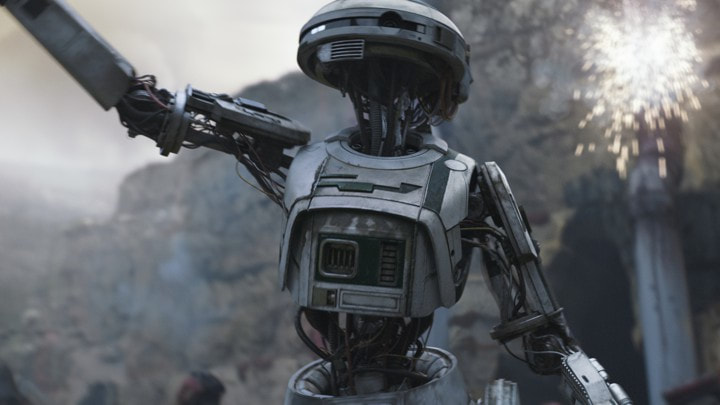Seeing as my list of Star Wars films has spread wider than I anticipated (at least it hasn't broken the internet quite as badly as the Princess-Leia-has-a-PhD tweet...), and I’ve been asked lots of questions about methodology, here’s a brief overview of how I arrived at these figures. As with all research, it's been labour intensive and I've had to make some tricky and imperfect decisions, especially as I'm trying to create quantitative data from qualitative. Here's the logic behind it, which forms just one aspect of my research project.
First off, I want to make clear that these are based on rough cuts of the remastered original trilogy, and prequels, sequels and spin-offs (i.e. what Disney now call ‘canon’ – sorry, no Holiday Special or ewok movies). I’ve edited the men out of the films as much as possible (more on this in a moment) but there are still sequences that need refining and further edits, so, if anything, the percentages of women’s screen time will likely go down as I trim excess male dialogue and reaction shots for a final cut. In my definition of ‘screen time’ for women I’ve tried to be as consistent as possible, although this is often challenging. I’ve only counted women with speaking parts because having the ability to say something and contribute to the story, and not serving as a visual object, is important. However, if a woman with a speaking part is onscreen and not speaking, and neither is a man, I’ve kept the footage. Consequently, you get a lot of reaction shots of Leia or Jyn not doing much but being the only character in the frame. When men are speaking and a woman is onscreen, I’ve made a value judgement about whether she’s central to the action (or not) at that moment in the story. Sadly, especially in Padme’s case, she’s quite often just kind of ‘there’. She really does get a rough deal. I have kept in as much footage as possible of planets, establishing shots and landscapes, as well as ships and battles (no, a ship does not count as female because humans have an annoying and sexist habit of gendering vehicles. A ship is a ship and it doesn’t have a gender. One day, let’s hope we all get to be more like ships). Initially I was going to cut a lot of the space dogfights because we know it’s men piloting the X-wings, etc. But by removing men from the rest of the films, it opens up the possibility that when we can’t see inside the vehicles there is a woman, non-binary or gender-neutral pilot. So, these sequences stayed.
I’ve also been asked a lot about droids and aliens. Almost every character in the Star Wars universe is gendered by the franchise. Threepio, Artoo and BB-8 are programmed ‘male.’ L3 is programmed ‘female.’ And, as L3 confirms for us in Solo, droids are sentient – hence droids can have genders (but the computer on the Falcon, which is not sentient, does not).
The wampa on Hoth is, apparently, male, so he goes in my cut. Mynocks, which are parasites and reproduce by splitting in two, could be gender neutral, so they stay. When animals appear in herds or packs containing two genders (for example, porgs and vulptex) I’ve left them in because there are limited hours in the day, life is short, and no, even I’m not nerdy enough to sit and work out which porgs have male or female eye-feathers. When in doubt about droids or aliens, I’ve referred to the Star Wars site, Wookieepedia, interviews with filmmakers, and evidence in the text such as gendered pronouns. There are further things to be said about the quality of women’s representation in the films, which I’m addressing in an audiovideo essay and my book. For a start, while women’s screen time improves as the number of women’s speaking parts goes up, the films don’t necessarily get better over time—see the prequels—and even the sequels and spin-offs barely pass the Bechdel test because women characters often inhabit the screen with men. The notion that women can have meaningful conversations with one another about something other than male characters is most apparent in The Last Jedi… but you can still count these exchanges on one hand. In future, I’ll be working on stats about the screen time for women of colour (my sense is that only the two sequels and Solo will produce significant results, and even these will be awfully low). My hope is that by telling you the odds of women being onscreen in Star Wars, we can keep having useful conversations about identity and representation in the franchise.
8 Comments
|
BlogArchives
November 2018
Categories
All
|


 RSS Feed
RSS Feed